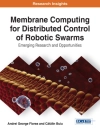The three volumes of this handbook treat the fundamentals, technology and nanotechnology of nitride semiconductors with an extraordinary clarity and depth. They present all the necessary basics of semiconductor and device physics and engineering together with an extensive reference section. Volume 1 deals with the properties and growth of Ga N. The deposition methods considered are: hydride VPE, organometallic CVD, MBE, and liquid/high pressure growth. Additionally, extended defects and their electrical nature, point defects, and doping are reviewed.
Mục lục
Preface.
Color Tables.
1 General Properties of Nitrides.
Introduction.
1.1 Crystal Structure of Nitrides.
1.2 Gallium Nitride.
1.3 Aluminum Nitride.
1.4 Indium Nitride.
1.5 Ternary and Quaternary Alloys.
References.
2 Electronic Band Structure and Polarization Effects.
Introduction.
2.1 Band Structure Calculations.
2.2 General Strain Considerations.
2.3 Effect of Strain on the Band Structure of Ga N.
2.4 kp Theory and the Quasi-Cubic Model.
2.5 Quasi-Cubic Approximation.
2.6 Temperature Dependence of Wurtzite Ga N Bandgap.
2.7 Sphalerite (Zinc blende) Ga N.
2.8 Al N.
2.9 In N.
2.10 Band Parameters for Dilute Nitrides.
2.11 Confined States.
2.12 Polarization Effects.
References.
3 Growth and Growth Methods for Nitride Semiconductors.
Introduction.
3.1 Substrates for Nitride Epitaxy.
3.2 A Primer on Conventional Substrates and their Preparation for Growth.
3.3 Ga N Epitaxial Relationship to Substrates.
3.4 Nitride Growth Techniques.
3.5 The Art and Technology of Growth of Nitrides.
3.6 Concluding Remarks.
References.
4 Extended and Point Defects, Doping, and Magnetism.
Introduction.
4.1 A Primer on Extended Defects.
4.2 TEM Analysis of High Nitrogen Pressure (HNP) Solution Growth (HNPSG) and HVPE-Grown Ga N.
4.3 Point Defects and Autodoping.
4.4 Defect Analysis by Deep-Level Transient Spectroscopy.
4.5 Minority Carrier Lifetime.
4.6 Positron Annihilation.
4.7 Fourier Transform Infrared (FTIR), Electron Paramagnetic Resonance, and Optical Detection of Magnetic Resonance.
4.8 Role of Hydrogen.
4.9 Intentional Doping.
4.10 Ion Implantation and Diffusion for Doping.
4.11 Summary.
References.
Index.
Appendix.
Giới thiệu về tác giả
Hadis Morkoç received his Ph.D. degree in Electrical Engineering from Cornell University. From 1978 to 1997 he was with the University of Illinois, then joined the newly established School of Engineering at the Virginia Commonwealth University in Richmond. He and his group have been responsible for a number of advancements in Ga N and devices based on them. Professor Morkoç has authored several books and numerous book chapters and articles. He serves or has served as a consultant to some 20 major industrial laboratories. Professor Morkoç is, among others, a Fellow of the American Physical Society, the Material Research Society, and of the Optical Society of America.












